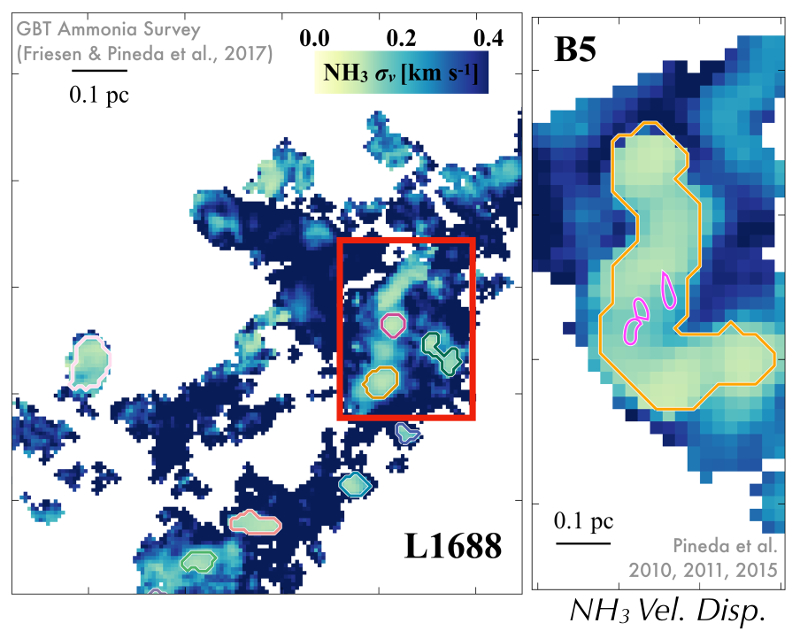
|
EPoS |
|
EPoS Contribution
|
|
Droplets: Pressure-Confined Sub-0.1 pc Coherent Structures
Hope Chen Harvard U, Cambridge, MA, US | |
| Nearly two decades ago, astronomers proposed that there exists a characteristic size scale of ~0.1 pc where the internal velocity dispersion of a core becomes subsonic and uniform. Such a subsonic core is termed the "coherent core". It is further proposed that star formation takes place in the "calm" subsonic environment inside the coherent cores, where gas does not follow the "turbulent" scaling laws observed on larger scales. Since then, multiple coherent cores have been identified, and in 2010, the spatial change in velocity dispersion from supersonic to subsonic values was observed across the edge of a coherent core in the B5 region in Perseus. Following upon previous works, my collaborators and I have recently identified a group of sub-0.1 pc coherent structures in L1688 in Ophiuchus and in B18 in Taurus, using observations of NH3 hyperfine line emission obtained as part of the Green Bank Ammonia Survey (GAS). The typical size and mass of these coherent structures are 0.04 pc and 0.3 Msun, and we termed this subset of coherent structures the "droplets" owing to their small sizes. We find that, unlike the larger-scale coherent cores, the droplets are not gravitationally bound. The droplets are instead confined by the ambient pressure due to the thermal and non-thermal motions of the gas in the turbulent environment. In this presentation, I plan to give an overview of the physical properties of the droplets, in the context of other coherent cores observed to date. I then look into the nature of the pressure confinement, and discuss the mechanism which might direct the formation and potential growth and/or destruction of these pressure-dominated sub-0.1 coherent structures - the droplets. | |
 | |
| Caption: The sub-0.1 pc coherent structures - droplets - in the L1688 region of Ophiuchus (colored contours in the left panel) shown to the same physical scale alongside the larger-scale coherent core in B5 in Perseus (the yellow contour in the right panel), on a map of NH3 linewidths (from yellow: narrow linewidths to dark blue: broad linewidths). The red rectangle in the left panel marks the most significant subsonic features in the L1688 region. The magenta contours in the right panel mark the outlines of star forming fragments found inside the coherent core in B5. | |
| Collaborators: J.E. Pineda, MPE, DE A.A. Goodman, Harvard, US A. Burkert, USM, DE Green Bank Ammonia Survey (GAS) Collaboration |
Suggested Session:
Cores |